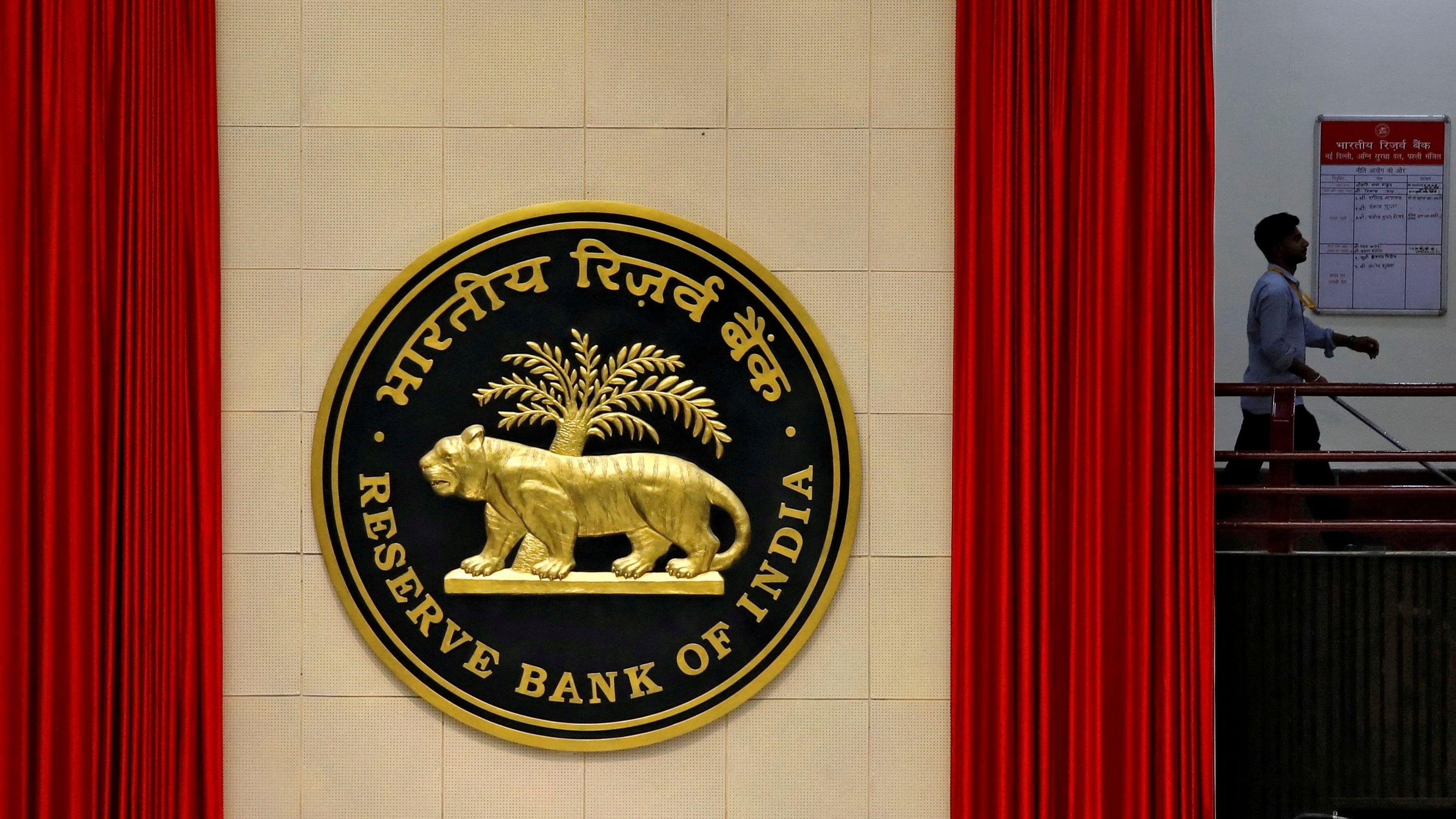
The logo of the Reserve Bank of India (RBI) seen inside its office in New Delhi.
Credit: Reuters Photo
The International Monetary Fund (IMF) has reclassified India's exchange rate regime to "stabilised arrangement" from "floating", saying stability in the value of rupee in the past one year despite external shocks was due to excessive interventions by the country’s central bank.
During December 2022-October 2023, the Rupee-US Dollar exchange rate moved within a very narrow range, suggesting that the foreign exchange intervention likely exceeded levels necessary to address disorderly market conditions, the IMF noted in its annual Article IV review.
However, the Reserve Bank of India (RBI) strongly disagreed with the IMF’s assessment terming it “unjustified”. “The RBI strongly believes that such a view is incorrect as, in their view, it uses data selectively," the report noted.
The RBI further underlined that the IMF’s assessment is short-term and restricted to 6-8 months without any rationale for the same. “If a longer-term view of 2-5 years is taken” IMF staff’s assessment would fail, it said.
The Indian rupee traded in a narrow range of 80.88 to 83.42 against the US dollar during December 2022 to October 2023 period. This kind of stability in the value of the rupee is unusual. The RBI is believed to have intervened in the forex market multiple times during this period to keep the rupee stable. Between December 2019 and November 2022 the rupee depreciated by around 15% against the US dollar.
The IMF suggested that “Going forward, a flexible exchange rate should act as the first line of defense in absorbing external shocks."
The IMF reiterated its gross domestic product (GDP) forecast for India of 6.3% in the current financial year. It is lower than RBI’s revised forecast of 7%. “Growth is expected to remain strong, supported by macroeconomic and financial stability,” the IMF said.
Going forward, digital public infrastructure and a strong infrastructure push by the government will continue to sustain growth. India has potential for even higher growth, with greater contributions from labour and human capital, if comprehensive reforms are implemented, the IMF suggested.
“The government’s push to the logistics and infrastructure sector has helped the country navigate global headwinds,” said Anshuman Magazine, Chairman & CEO - India, South-East Asia, Middle East & Africa at CBRE.
“Strong emphasis on digitalisation coupled with favourable monetary policy to battle inflation has not only insulated India from a slowdown but also put the country on growth trajectory,” Magazine added.
On price rise, IMF said, “headline inflation is expected to gradually decline to the target although it remains volatile due to food price shocks.”